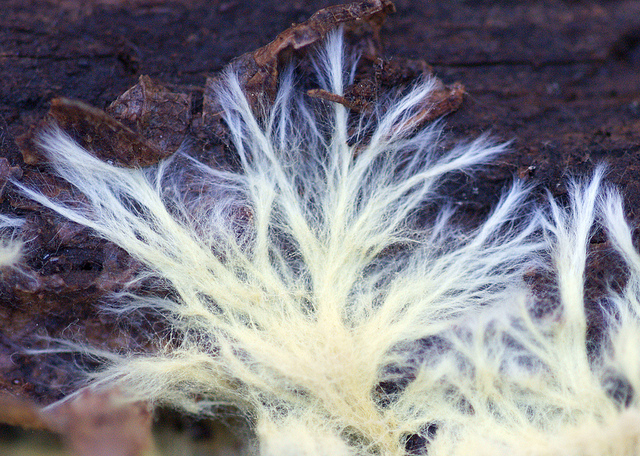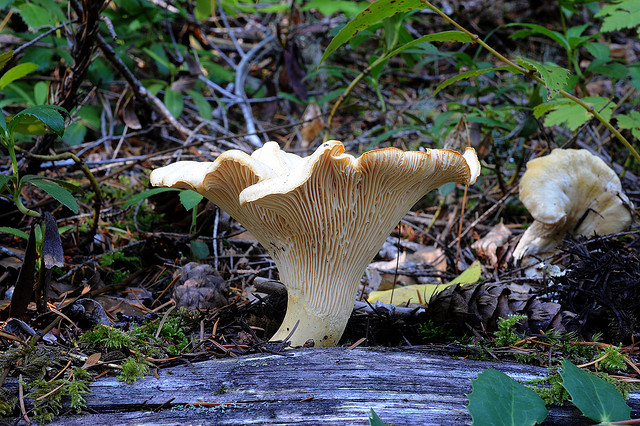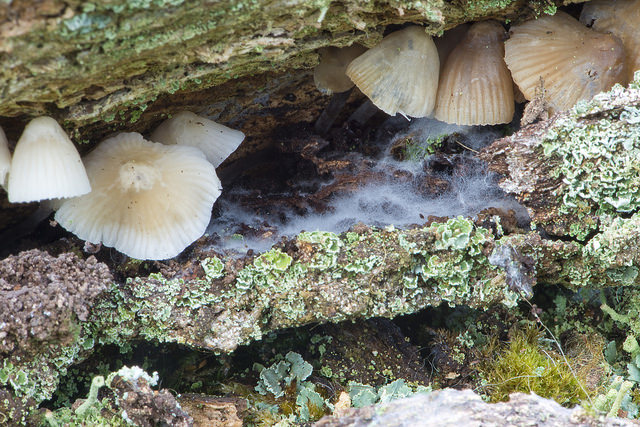Mushrooms support a thriving economy
Wild mushrooms are popular fan-fare in gourmet restaurants across the country, and if you’re a fan of wild mushrooms, you may have noticed that they’re more expensive than the typical mushroom you buy in a grocery store. Morels , for example, can sell for upwards of $20/pound in your local grocery store. Why are they so expensive?Because they often grow in remote locations deep in our forests and it requires hard work and dedication to pick them.
Tens of thousands of commercial mushroom harvesters gather mushrooms from our National Forests every year. As mushrooms make their way from the forest to the restaurant table, their dollar value increaseses dramatically. With very little information collected about the total harvest of mushrooms from our National Forest, the overall economic impact is hard to estimate. However, it is very likely in the millions - if not tens of million -of dollars per year.
[Note: Previous readers have been reporting that some forest agencies may require a permit for picking mushrooms such as the popular Morel. Check with your local agency before venturing out to collect.]

Many wild mushrooms harvested on our National Forest end up at high-end restaurants in delicious meals.
Mushrooms are the fruit of a bigger organism
Did you know that when you encounter a mushroom on the forest floor it’s not just a mushroom? That’s right, mushrooms are merely the fruit of a predominantly underground organism. The majority of the organism is underground in the form of mycelium – the vegetative part of a fungus that consists of a mass of branching single-cell strands called hyphae. The mushroom itself is the fruiting body of that fungus, which allows it to disperse spores and create more mushrooms.
Did you know that the biggest organism on earth is a fungus? One specific honey mushroom fungus ( Armillaria solidipes ) spans 2.4 miles across the Malhuer National Forests in the Blue Mountains of Oregon.

The majority of fungi in the forest take the form of underground mycelium, a vast network of single-cell strands.
Trees and plants depend on fungi
Fungi are well known for their mutualistic relationships with other species. Mutualism occurs when two or more organisms directly work together for their mutual benefit. Many forest fungi species form mutualistic relationship with other plants. The mycelium of fungus species form exterior sheaths around the roots of partner plants. Because strands of mycelium are much smaller than tree roots, the mycelium effectively extends the plant’s root system, allowing them to absorb water and nutrients more effectively.
Fungi benefit from this mutualistic relationship because it allows them to access the carbohydrates produced by the plants. Recent research suggests that these “mychorrizal relationships” are an important component of overall forest health, and that many plant species would not thrive without it.

Chanterelle mushrooms is a highly desired mushroom that is well known for its mychorrizal relationship with certain tree species.
Mushrooms are critical to decomposition
What happens to a tree when it falls over in the forest? It begins to decompose and will eventually be returned to the forest in the form of soil, but how does this happen? Fungi are a critical part of this process. Saprotrophic fungi – a group of fungi that play an important role in decomposition – colonize organic matter like dead wood by growing as a branching network of hyphae. They then decompose the material by releasing specialized enzymes that break down the decaying material, allowing them to absorb the nutrients.

Mushrooms play an important role in decomposition in our National Forests. Here you can see the mycelium of a fungus colonizing a decomposing log.

